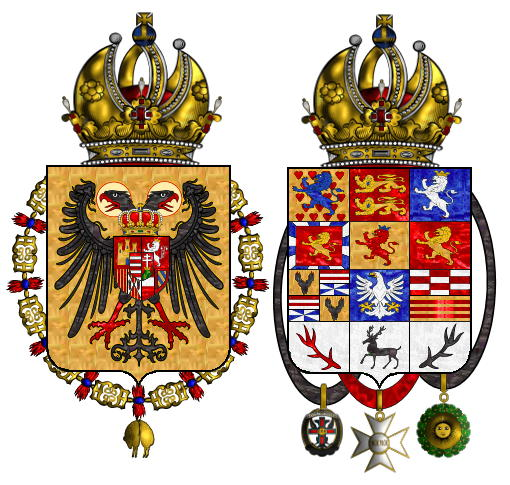In this chapter I would like to highlight the links between the Hofmusikkapelle and Italian composers that at the beginning of the 18th century had already existed for several decades. Antonio Caldara’s appointment was therefore giving continuity of this tradition of the many Italian composers who became (vice)kapellmeister of the emperors of the Habsburg dynasty.
The Habsburg Hofmusikkapelle is located in the Vienna Hofburg, the place of residence of the imperial family, the Habsburgs. In the 17th and 18th centuries Vienna was the Kaiserstadt, the city of the emperor. It was the administrative centre of the Habsburg court, the capital of the Austro-Hungarian monarchy and also the capital of the Holy Roman Empire. Politically, it was the starting point and strong influence in the expansion of the Counter-Reformation, and was fundamentally opposed to a long-standing rival, the Sun King,1 both politically, culturally and musically. Indeed, according to Sandra Perez, "the imperial Baroque style was also a political statement that combined Spanish and Italian motifs, serving as the antagonistic style to the French Baroque".2 Vienna was therefore an important European musical centre, especially for Italian opera, and had for many years maintained fruitful exchanges with many musicians from all over Italy.
The existence of the Hofmusikkapelle in Vienna dates back to the 15th century, when Emperor Maximilian I reorganised the music at the court, transferring the Hofkapelle from Augsburg to Vienna. It seems that after his death in 1519, the chapel was somewhat neglected until his successor Ferdinand I, in 1527, restored it.3 During this period, the court musicians came especially from Flanders.
In 1619, Ferdinand II became the new emperor. With his accession to the throne and his taste for the arts in general and music in particular, it seems that "baroque musical ideals came to be accepted in Vienna and the city became established as a European musical centre".4 The first two Italians as Hofkapellmeisters – Giovanni Priuli (1619) and Giovanni Valentini (1626) – started two hundred years of links between Vienna and Italian music, according to Theophil Antonicek.5
The Italian musicians (instrumentalists and composers) employed at court came mainly from Venice, Mantua, Rome and Florence. In 1622, Ferdinand II's second marriage to Eleonora Gonzaga of Mantua strengthened the ties Vienna and the Hofmusikkapelle had with Italy, and with Claudio Monteverdi. In 1631, the first female singer employed in Vienna was from Mantoua: Margherita Basile. After the death of Ferdinand II in 1637, Claudio Monteverdi continued to maintain ties with his widow Eleonora by dedicating his Selva Morale to her in 1640, and the composer also made connections with the new Emperor Ferdinand III by dedicating his Eight book of madrigals to him in 1638.
Emperor Ferdinand III appears to be the first composer emperor in this dynasty. His master of composition was Giovanni Valentini, and he also surrounded himself with other Italian composers such as Antonio Bertali and Giovanni Felice Sances. From this period and until Charles VI' death in 1740, Italien music was considered as "the highest expression of musical art".6
In 1658 Ferdinand III died, and Leopold I took his place. Particularly fond of music, he maintained the tradition of bringing renowned instrumentalists and composers from Italy, whom he engaged as Kapellmeister. In addition to maintaining his own chapel, he was also very close to his mother-in-law, the widow of his father Ferdinand III, Eleonora de Gonzaga-Nevers, who owned her own (music) chapel and continued to support it even after her husband's death. As empress, she greatly developed the cultural and musical activity of Vienna.7
Like his father, Leopold I was also a composer and left us many instrumental works (such as ballet music) as well as vocal works (such as oratorios). Among the musicians employed under his reign were Antonio Bertali, Antonio Draghi, Giovanni Bononcini, Marc'Antonio Ziani and Francesco Conti. Under his reign, because Leopold I was both a patron for the arts and a composer, Vienna became the "most important centre of sacred dramatic music in the Italian language outside of Italy".8
Among the ten children Leopold I had with his third and last wife were Joseph I and Charles VI. They were also musicians, composing and taking an active part in the musical life of the court, whether at family festivities (weddings) or at the opera. Joseph I seemed particularly attracted to the chalumeau, for which he composed an aria "Tutto in pianto" included in Marc'Antonio Ziani’s opera Chilonida in 1709, considered to be one of the first arias with chalumeau obbligato in Vienna. According to Sandra Perez, he "is regarded as the most important monarch to the development of the chalumeau.9
After his brother's death in 1711, Charles III, then King of Spain and living in Barcelona, became the new emperor under the name of Charles VI. "He was the last in the line of emperor-composers and after his death, the Hofkapelle plunged into decline".10 Keeping Johann Joseph Fux and Francesco Conti from his brother's chapel, he also hired Antonio Caldara in 1715 to become the vice-kapellmeister. Unfortunately, none of the emperor's compositions have survived to the present day.
Margaret Theresa of Austria
(1651-1673)
Claudia Felicita of Austria
(1653-1676)
Eleonore Magdalene of Neuburg
(1655-1720)
Here you can find a reduced family tree of the Habsburg dynasty, from Ferdinand II to Charles VI, the emperor during whose reign Caldara was vice-kapellmeister.
The small treble clef next to some of the names indicates that the person had a strong connection with the musical activities of his/her time or was (for men) a composer.
Back to table of contents
To next chapter: Caldara's Viennese oratorios

